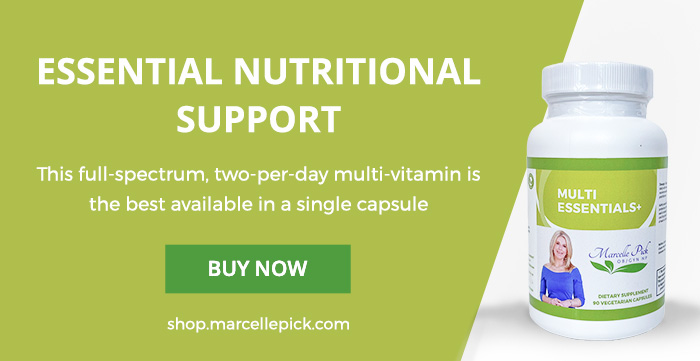Do you ever put off going to see a healthcare professional because of the cost? So many women do these days. That’s because just walking through the door of their doctor’s office can cost them more than a week’s worth of groceries! I hear this kind of thing all the time – and I’m not talking about women with no health insurance! More and more often, people have copayments and deductibles that make getting uncomfortable symptoms checked out almost impossible.
A friend of mine, Ginny, woke up one day unable to step out of bed without shooting pain in her foot. The foot was swollen, but showed no obvious signs of infection. Still, not being able to walk easily is a serious issue so she called her primary care physician. The doctor gave her a boot to relieve the pain and referred her for an x-ray, which came back normal. Her doctor said it was probably nerve related, and if it didn’t resolve, a cortisone shot might be needed. Because Ginny has a high deductible plan, she ended up paying hundreds of dollars for no real answers.
All too often, I hear women say they don’t feel right, but they aren’t going to see their healthcare provider due to the expense. While an annual physical is covered by insurance regardless of your plan, that doesn’t help with symptoms that arise mid-year. And these days, insurance may not even cover specific issues you discuss at that physical! It all depends on which billing codes are entered after your visit. If you want specific tests that go beyond the usual scope, you may well end up paying for them.
And then there’s the cost of premiums. “Affordable” health care can cost upwards of $900 per month for a family. The people hit hardest are those who don’t qualify for subsidies, but aren’t making enough to support that kind of premium cost. It’s harder and harder to find an affordable plan, but the risks of being uninsured – even if the tax penalties would cost you less – aren’t worth it.
Health Care Costs Are a Hardship for Many Americans
So how much do health care costs impact the average American? In 2014, after running a series of articles examining the high cost of ordinary medical care, the New York Times conducted a national poll on the subject. Over half of people responding said that the cost of basic medical care was a hardship for them and their family.
A 2016 Kaiser Foundation/New York Times survey painted a similar picture. One in five respondents with insurance, and more than half (53%) without insurance said they have had trouble paying medical bills. The survey also revealed that people with problems paying medical bills put off seeking health care due to cost. They are draining their savings and working more to pay these medical expenses. All of that takes a big toll on the body and mind.
And there’s more. The health insurance industry is so big and powerful that it’s difficult to know all the ways in which they are impacting what you pay. I heard something startling the other day on a PBS news report: Health insurance companies are paying data brokers for information about your lifestyle choices — and those choices might raise your premium rates!
Why Are Health Care Costs So High?
Annual health care spending has been on the rise for years, at a percentage far higher than economic growth. In the next decade, health care costs will account for 19.7% of the economy, up from 17.9% in 2016. What’s behind this increased spending?
One factor is the aging population in the United States. As people get older, they often require more medical care. But a government report prepared by independent economists at the U.S. Department of Health and Human Services says that a large portion of the increased spending is likely from the rising cost of care, specifically prescription drugs.
Indeed, there’s been a media explosion of stories on the prohibitive cost of prescription drugs. And why are these drugs so expensive? It’s all about competition and what the market will bear. There is no government regulation of the cost of prescription drugs, so manufacturers can set their own prices. These manufacturers will point to high cost of research and development, as well as a treatment success rate, to justify the cost. But I think there are some outrageous prices!
And then there’s the tests that everyone recommends, and health insurance companies are paying for, that may not be effective. Take mammograms, for example; there’s a lot of controversy about how often they should be done. But an annual mammogram is still recommended, and most often covered by insurance. There are many helpful tests, like adrenal function testing, that insurance companies won’t pay for. Yet these are the tests that are proactive in taking charge of your health and healing underlying problems. How does that make sense?
Waiting Too Long to Get Care Can Mean Even Higher Health Care Costs
I’ve seen it time and again: a woman comes to me for help after ignoring a problem for far too long. It’s hard to seek the help you need when the cost of health care seems prohibitive. But symptoms are a signal your body is sending that something has gone awry, and when they’re ignored, whatever that problem is can grow.
The call for help gets louder and louder until it simply can’t be ignored any longer. That’s when chronic disease and autoimmune disorders, both of which are on the rise in the U.S., come into play. And by then, the tests and treatments needed could cost even more. So it’s important to seek out help whenever you have new symptoms that persist.
But there are ways to address issues when they first begin – and even prevent them altogether! We’re not doing well in the United States as compared to the rest of the world when it comes to treating chronic disease. And that’s because we aren’t looking at the root causes. That’s where functional medicine comes in. Lifestyle choices can make a big difference. So let’s take a look at a few of the ways that you can help keep your own health care costs lower.
A Healthy Lifestyle Can Keep Health Care Costs in Check
We have no control over what our healthcare providers charge for the care we require. But we do have control over the lifestyle choices we make. There are many ways to support your body, which may ultimately mean you need less medical intervention.
In our fast paced world, it can be difficult to know exactly how to do that. Conventional medicine practitioners often fall back on prescriptions or refer you for expensive tests; they simply aren’t given the time to really dig deep and discover what might make you feel better. When I see patients, they’re in my office for a long time. I talk with them about all the possibilities. I encourage women to open up and let me know what is happening, both physically and emotionally, in their lives. Only by peeling back the layers of our lives can we shine a light on areas that, with a few shifts, can make a huge difference in the way we feel.
Your best line of defense is to pay close attention to those choices that you can control — and you have more control than you may think! Here are seven tips to get you started on your path to the healthiest woman you can be!
1. Focus On Food
I can’t say it often enough – food is where it all begins. When we pay attention to how specific types of food affect us individually, we can ward off many of the issues we might seek medical attention for – digestive problems, low energy, skin conditions, and much more. Each of us has different sensitivities, and recognizing them is important. Fresh, organic whole foods are always a good choice. Leaving processed foods behind might help you avoid some of those extra visits to your health care provider.
2. Move More
Exercise, like food, must be based on your unique circumstances. And I’m not talking about suddenly training vigorously several times a week. Interval training – short bursts of activity – are often more healthy than long, intense sessions. No one form of exercise works for everyone, but any form is better than being a couch potato. Take a brisk walk, hike in the woods, hop on a bike, try a new exercise class, or grab some friends and go out dancing.
3. Break Bad Habits
We all have coping mechanisms that we develop, but if yours include habits like drinking too much alcohol, smoking, or diving into sugary treats, it’s time to re-assess how these habits are making you feel. While each might be a “quick-fix” in the moment, I think you’ll find that cutting back and moving towards healthier choices may make you feel better than you knew you could!
Related article: 5 Healthy Eating Habits & How to Look Beyond the Food You Consume
4. Banish Stress
If you want to know details on how stress impacts your life, check out the numerous articles I have in my health library. If you just want the highlights, suffice it to say that stress can impact every aspect of your health. That’s why it’s so important to do what you can to slow down, even when it feels impossible. Even if you don’t have time for a lengthy meditation session, a few deep breaths, easy stretches, or quiet visualization can help you feel grounded and more relaxed.
5. Check in On Your Emotions
Do you have any idea of the physical ramifications emotional stress can have? When you stifle your emotions, you are causing your body stress. And I already talked about what stress can do! Take the time to notice what you are feeling and process these emotions before they overwhelm you.
6. Seek Out Alternative Therapies
Remember my friend with the foot issue? One chiropractic treatment, which cost her less than $100, took care of the problem. A massage can help you de-stress and keep you feeling great. Sometimes, conventional medicine isn’t the only – or the best – solution for the symptoms you have.
7. Supplement Your Nutrition
It’s difficult to get all the essential nutrients you need from food – especially if you haven’t fully shifted away from convenience foods to an optimal eating plan. A high quality multivitamin can help keep your body balanced.
A Word of Caution
I think it’s really important to note that although these preventative measures and healthy lifestyle choices can help you avoid unnecessary health care costs, it’s still vital that you seek out care for symptoms that are impacting your quality of life. Unusual changes to your hair and skin, pain that has no explanation, digestive issues or anything that makes carrying out your usual activities difficult are a message – and they shouldn’t be ignored!
Stave Off the High Cost of Health Care Through Healthy Choices!
Health care costs aren’t getting any lower – and they probably will only continue to rise unless something big shifts in our culture. But you don’t have to be held captive to outrageous costs or poor health. Finding ways to regain control over your lifestyle choices can help keep you out of the doctor’s office – and still feeling your very best!
References:
http://www.latimes.com/politics/la-na-pol-national-healthcare-spending-20180214-story.html#
https://www.thebalance.com/causes-of-rising-healthcare-costs-4064878








